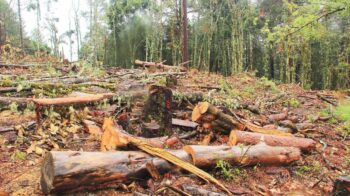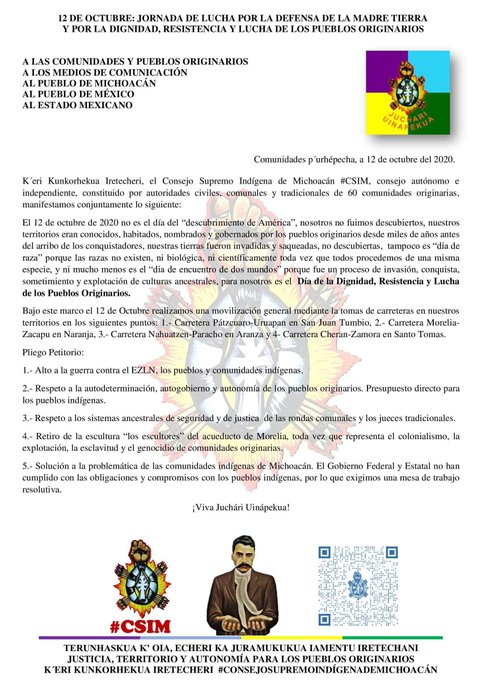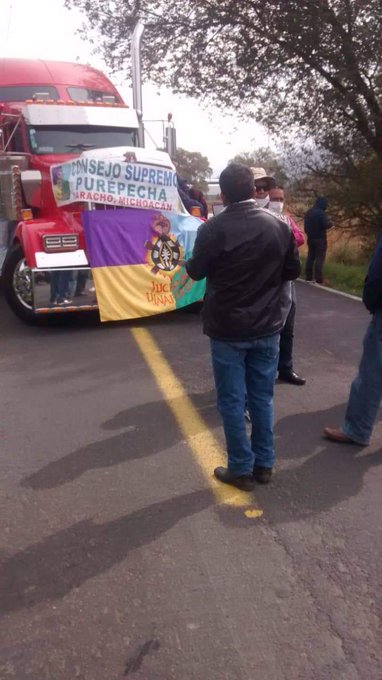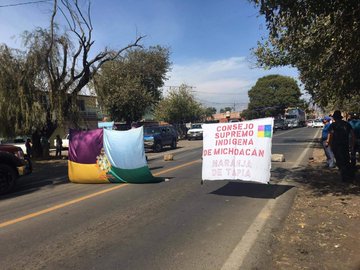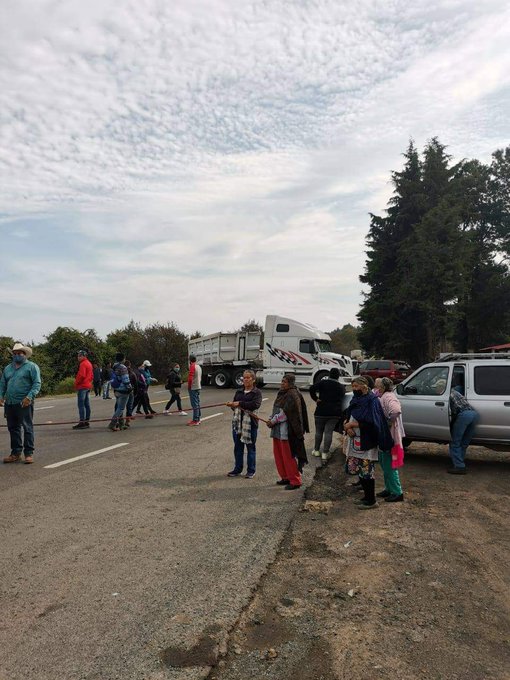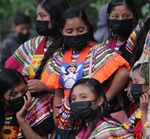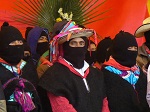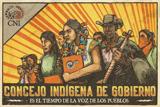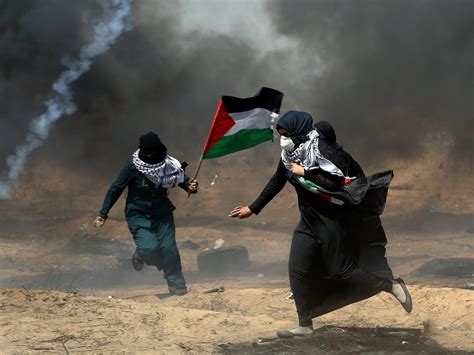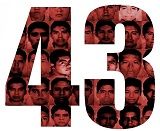(Español) Carta de solidaridad a San Lorenzo de Azqueltán por sus 7 años de AUTONOMÍA
Estimadas compañeras y compañeros de la comunidad Wixárika y Tepehuana/Tepecana de San Lorenzo de Azqueltán(CNI-CIG) en Jalisco, México.
Los colectivos, organizaciones e individ@s que firmamos esta carta, celebramos y nos solidarizamos con la digna lucha de su pueblo en el Séptimo Aniversario de la consolidación de la comunidad Autónoma de San Lorenzo de Azqueltán los próximos 21 y 22 de noviembre. Mantenemos nuestra mirada en cada uno de sus proyectos autónomos y con fuerza les animamos para que, en la defensa de su territorio y su forma de vida, prosigan organizándose.
Debido a la situación actual de la pandemia, entendemos que el riesgo es demasiado alto para que podamos asistir a su próxima celebración. Esperamos poder acudir a la inauguración de su Clínica Autónoma cuando la situación mejore. Acompañaremos sus rezos en solidaridad desde nuestra geografías mientras celebran su aniversario con su ceremonia tradicional.
Aprovechamos esta ocasión para denunciar toda la represión que ha sufrido la comunidad recientemente. Sabemos que durante su resistencia en defensa de la madre tierra y en la construcción de su autonomía, han sufrido secuestros, ataques armados y amenazas de muerte, todo ello con el objetivo de intimidar a lxs miembros de su comunidad para que cedan las tierras que han cultivado durante siglos. Estas tierras sagradas le pertenecen a su comunidad, cuentan con un título de propiedad desde 1733. Repudiamos las acciones de los ricos y del mal gobierno que impide el reconocimiento de este título y que se dedica a despojar la tierra de la comunidad.
Los siguientes ataques son muestra de las represalias y discriminaciones que atentan contra los esfuerzos de la comunidad para proteger su territorio y hacer valer sus derechos como comunidad indígena autónoma, incluida la elección de autoridades comunales y la recuperación de tierras invadidas. Por el contrario, las diferentes instancias de gobiernos buscan la represión y el desplazamiento. La maquinaria del gobierno municipal, con el supuesto fin de abrir una carretera cerca del sitio sagrado de Los Pilares, ha ido invadiendo y destruyendo cercas en las parcelas agrícolas de varios comuneros.
- Hace un año, el 3 de noviembre de 2019, antes de la prevista celebración del sexto aniversario de la comunidad autónoma, el presidente del consejo de seguridad Noé Aguilar Rojas, y otros dos comuneros fueron brutalmente golpeados, lo que obligó a postergar la celebración. Cuando los heridos llegaron al hospital, fueron discriminados y se les negó la atención médica.
- El 10 de enero de 2020, Jesús Manuel Aguilar Hernández, defensor de la tierra y miembro del Congreso Nacional Indígena, recibió un disparo con un arma calibre 38 por parte de Flavio Flores alias “La Polla” un ganadero local conocido como cabecilla de los acaparadores de tierras.
- El 22 de marzo, Camerino Márquez Aguilar y Genaro González Bañuelos, dos hombres ancianos de la comunidad, fueron atacados una vez más por personas al servicio de Flavio Flores (“La Polla”) y por empleados del gobierno municipal de Villa Guerrero, Jalisco: Teódulo Pérez Martínez junto con Abram Pérez Bañuelos, Jairo Pérez Bañuelos y Aldo Herrera González.
A pesar de que estas personas han sido denunciadas en diversas ocasiones, en lugar de ser detenidos, han contado con el apoyo del gobierno municipal de Villa Guerrero, que no ha tomado acciones para sancionarlas, sino que ha fomentado la violencia y el enfrentamiento. Esta postura del gobierno a todos los niveles es consistente dentro de un estado capitalista racista y neoliberal que ha intentado a través de diversos medios despojar a los pueblos originarios. Entre otras estrategias de despojo, el gobierno intenta romper la propiedad comunal y crear la propiedad privada individual para que las tierras de los pueblos originarios puedan venderse y ponerse a disposición para proyectos extractivos capitalistas que saquean los recursos naturales y dejan la tierra destruida y empobrecida.
Las comunidades indígenas autónomas como la Comunidad Autónoma Indígena de San Lorenzo Azqueltán están en la primera línea de la resistencia, son un ejemplo para tod@s nosotr@s.







